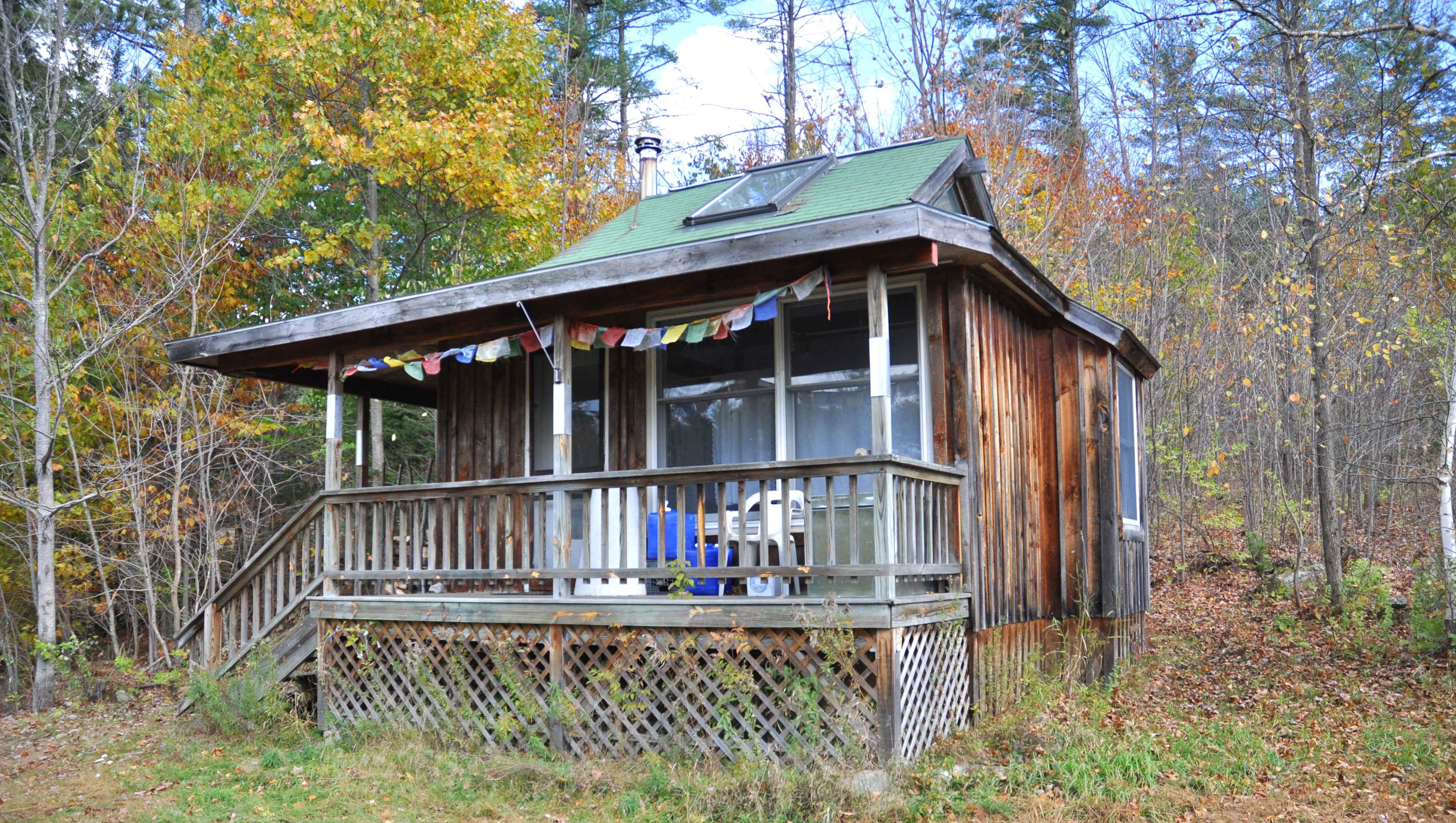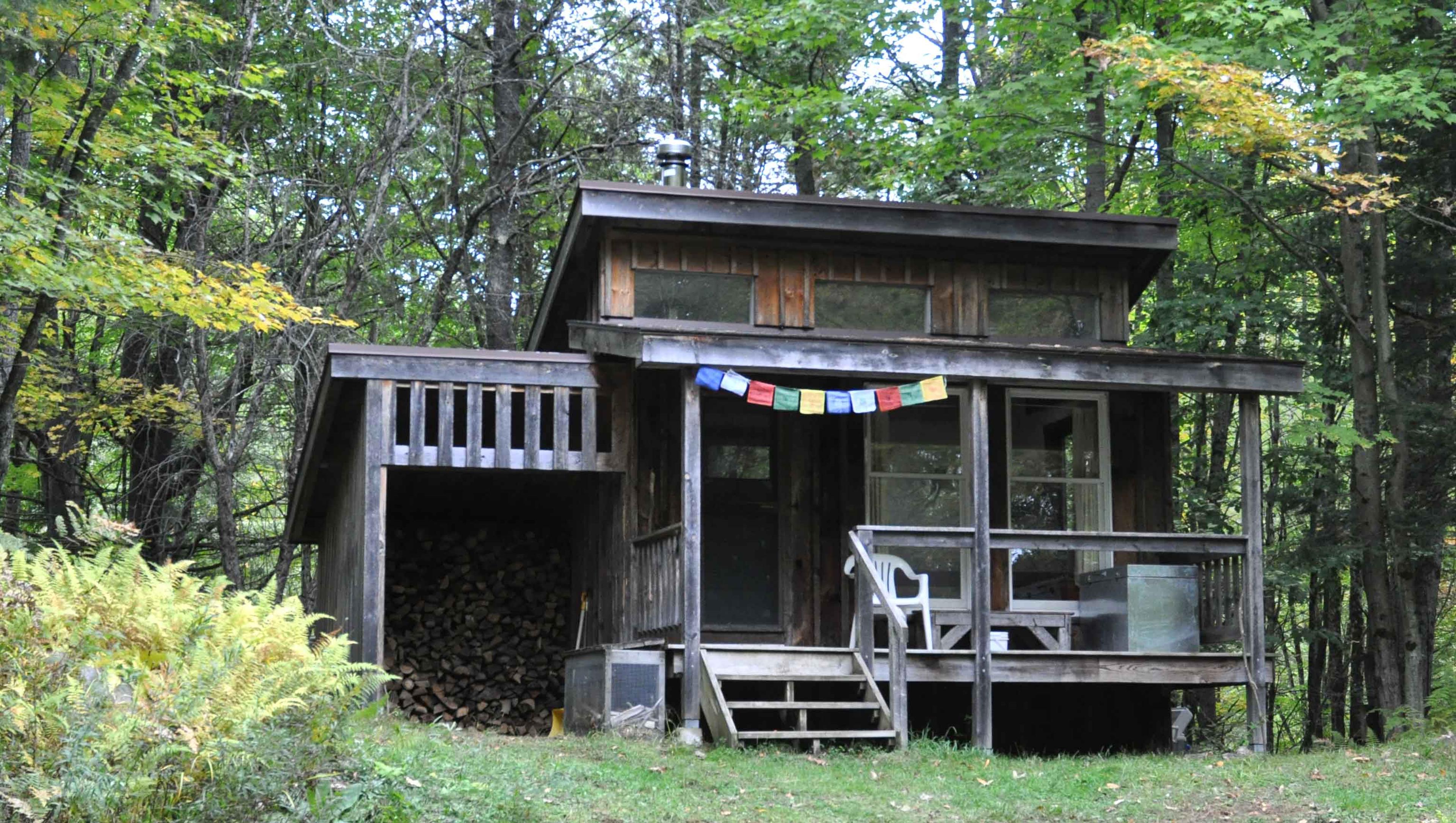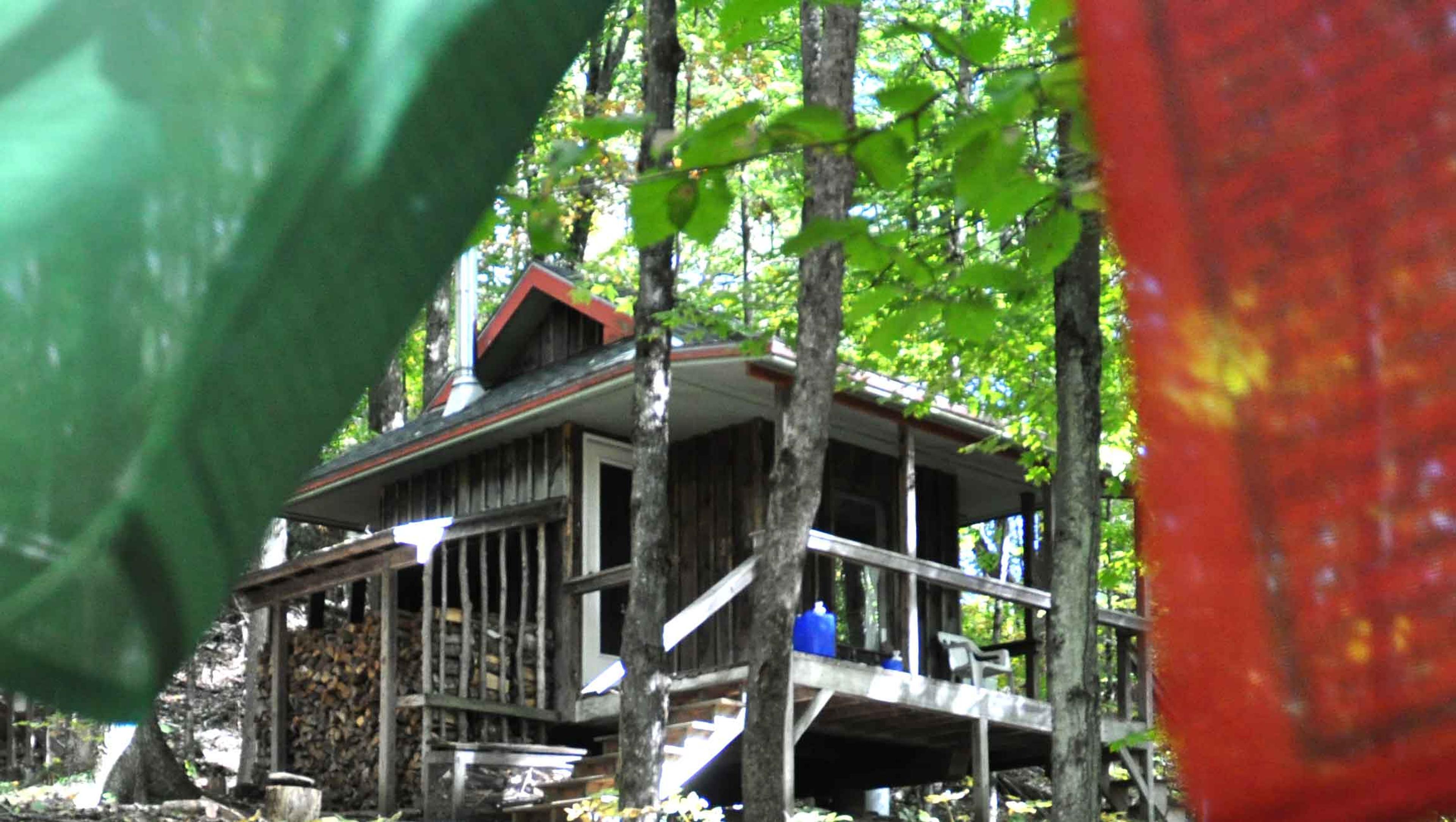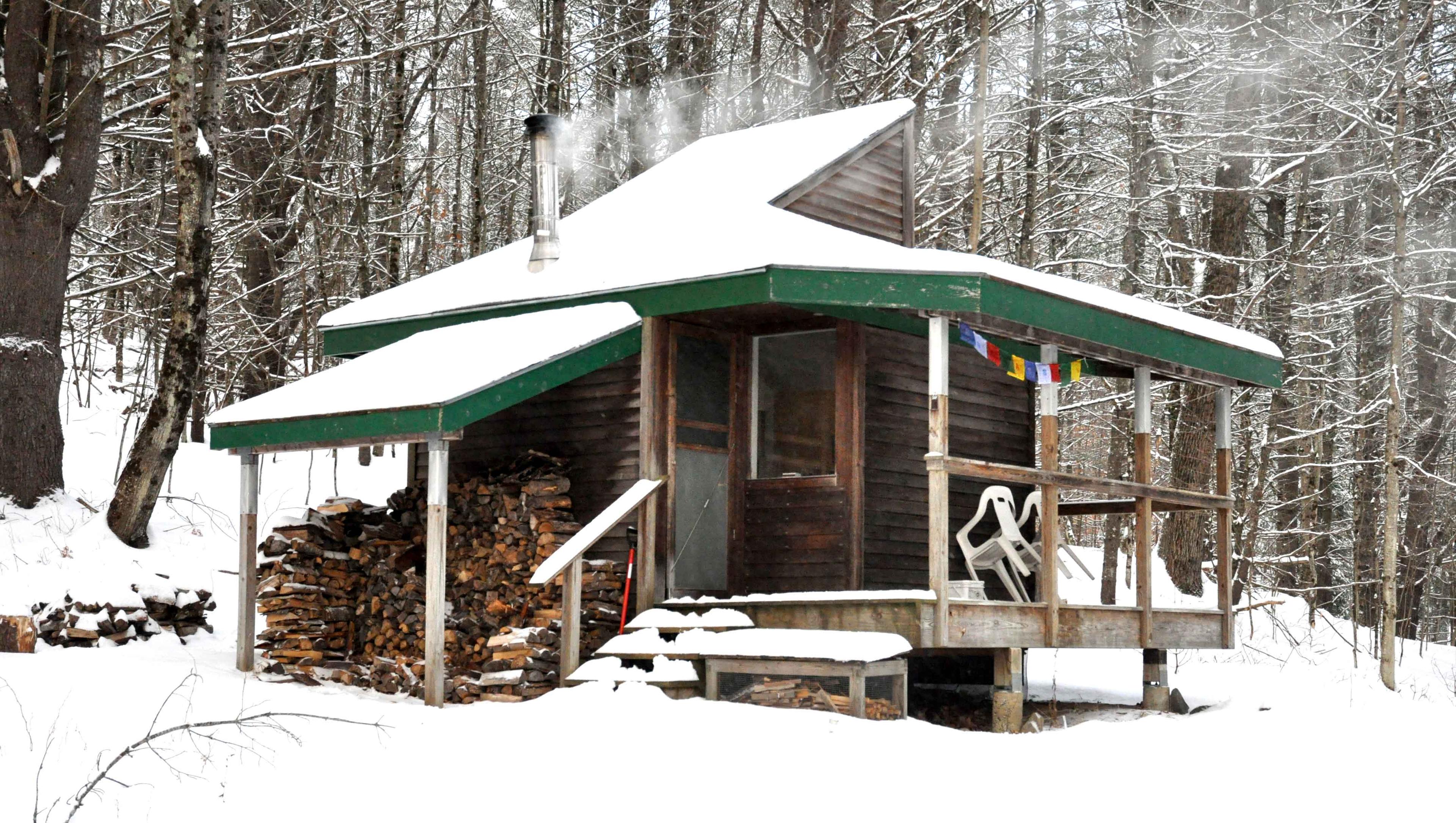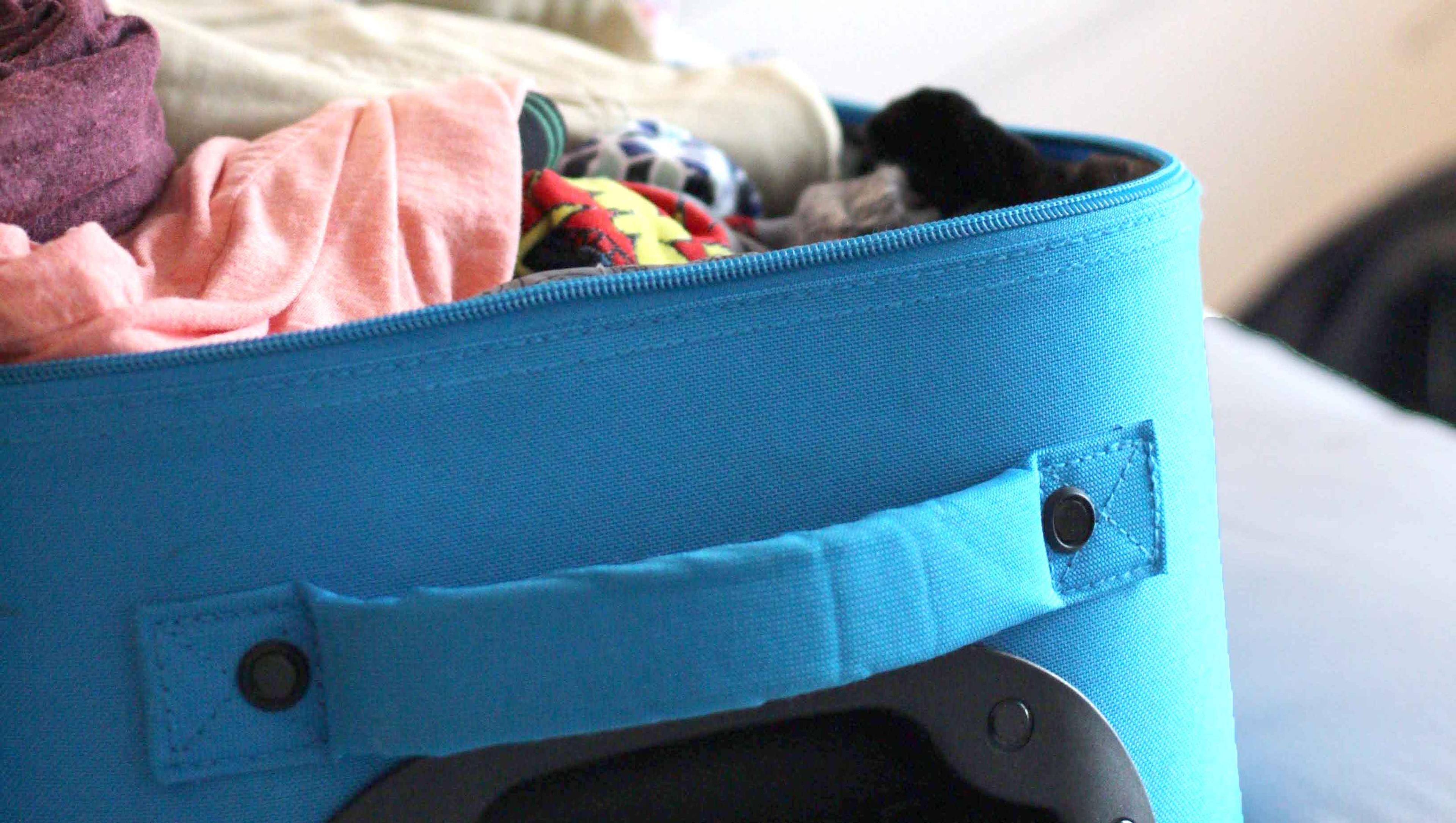Solitary Cabin Retreats
What To Know
Greetings from the Retreats Team!
Thank you for your interest in doing a solitary cabin retreat at Karmê Chöling. This page answers a number of questions you may have about doing a solitary retreat at Karmê Chöling. Please take a few moments to review its contents.
Our Solitary Retreat Cabins
Yeshe
Tibetan: Primordial Wisdom
Spacious, airy and bright, Yeshe is surrounded by gentle young trees, saplings and raspberry fields at the edge of a small glen. It is out from under the forest canopy, yet hidden from view. The cabin has big windows, a skylight and a beam ceiling. With ample sky energy and faraway views, Yeshe is a wonderful setting for a spacious retreat.
Vaishravana
Mythical King and Guardian of the North, Bestowing Prosperity
Also known as Jambhala or Kubera
This roomy cabin is located in the forested lower hills surrounding the main building. In summer time, Vaishravana is shaded by a canopy of tall deciduous trees, among them several gnarled old maples. It is surrounded by lush fern, mossy logs and boulders, and a brook running by that carries cool “sky water” from the upper Retreat Area. The entrance to the cabin is near a parking lot, but the cabin feels remote nonetheless. The interior is more modernly furnished than other cabins. The set up of shrine, kitchen and sleeping area is nicely balanced and the many large windows add to its spacious atmosphere.
Nirmanakaya
Sanskrit: Body of the Buddha
This tiny cabin features large windows along its porch, looking out into a bowl-shaped glade, which has a peaceful and protected atmosphere; so much so, that groups of deer frequently sleep close by the cabin. It is located near the Retreat Road, but hidden from view, in short walking distance to the meadows surrounding the Purkhang, the stupa-like monument in the upper Retreat Area. From Nirmanakaya, one can easily walk down to the Main House, if need be.
Nagarjuna
Indian Mahasiddha Who Retrieved the Heart Sutra
Remote, with a commanding view over a secluded meadow in the upper Retreat Area, Nagarjuna’s removed location makes it a favorite of many seasoned practitioners. This large cabin has a simple, rustic interior with dark woodwork, a skylight, a beam ceiling and a corner shrine.
Great Eastern Sun
This cabin is perched on a steep wooded slope in view of the Purkhang. Although it is one of the smaller cabins, the interior feels particularly harmonious, with the shrine featured prominently and the kitchen and bed tucked into their own niches. Surrounded by tall oak and maple trees, with a craggy, dark rock formation looming in the back, it is shaded and cool in summer. During the winter it feels protected in its elevated location. Sakyong Mipham Rinpoche's mother, Lady Kunchok, always chose this cabin for retreat while she lived at Karmê Chöling.
Dhritarashtra
Mythical King and Guardian of the East, Leader of Celestial Musicians
Traveling uphill on the Retreat Road, then following a winding trail deep into the woods, one passes several spiky old pine trees that seem to stand guard over the remote site of this cabin. Dhritarashtra stays cool all summer long, but a gap in the tree line opens into a sunny glen, visible from the porch. The cozy interior resembles that of the Great Eastern Sun cabin, symmetrical and well-designed.
Cabin Information
For Going Into A Solitary Retreat
Write a Retreat Schedule
Advice For Going Into Solitary Retreat

Whether its your first solitary retreat or you consider yourself an old hand, it’s important to have clarity about your intentions on retreat.
Alexander deVaron, a senior teacher in Shambhala and a longtime solitary retreatant, encourages retreatants to establish a vision of what they want to do each day in retreat.
Cost & Fees
Create the retreat you want for the time you want
Solitary retreats cost $40 to $65 a night, depending on how long you stay, plus a $150 Retreat Area maintenance fee that pays for upkeep of roads, roof repair, trimming trees and retreat vehicle maintenance.
What We ProvideFood During Retreat
Feel free to reach out to our Retreat Master at retreats@karmecholing.org with any questions you have concerning the retreat cabins.
| Number of nights | Cost per night |
|---|---|
| 5-6 nights | $65/night |
| 7-10 nights | $55/night |
| 11-28 nights | $50/night |
| 29-56 nights | $45/night |
| 57+ nights | $40/night |
| Nights | Per night | Cost | Maint. Fee | Total |
|---|---|---|---|---|
| 5 | $65 | $325 | $150 | $475 |
| 10 | $55 | $550 | $150 | $700 |
| 20 | $50 | $1000 | $150 | $1150 |
| 40 | $45 | $1800 | $150 | $1950 |
| 80 | $40 | $3200 | $150 | $3350 |
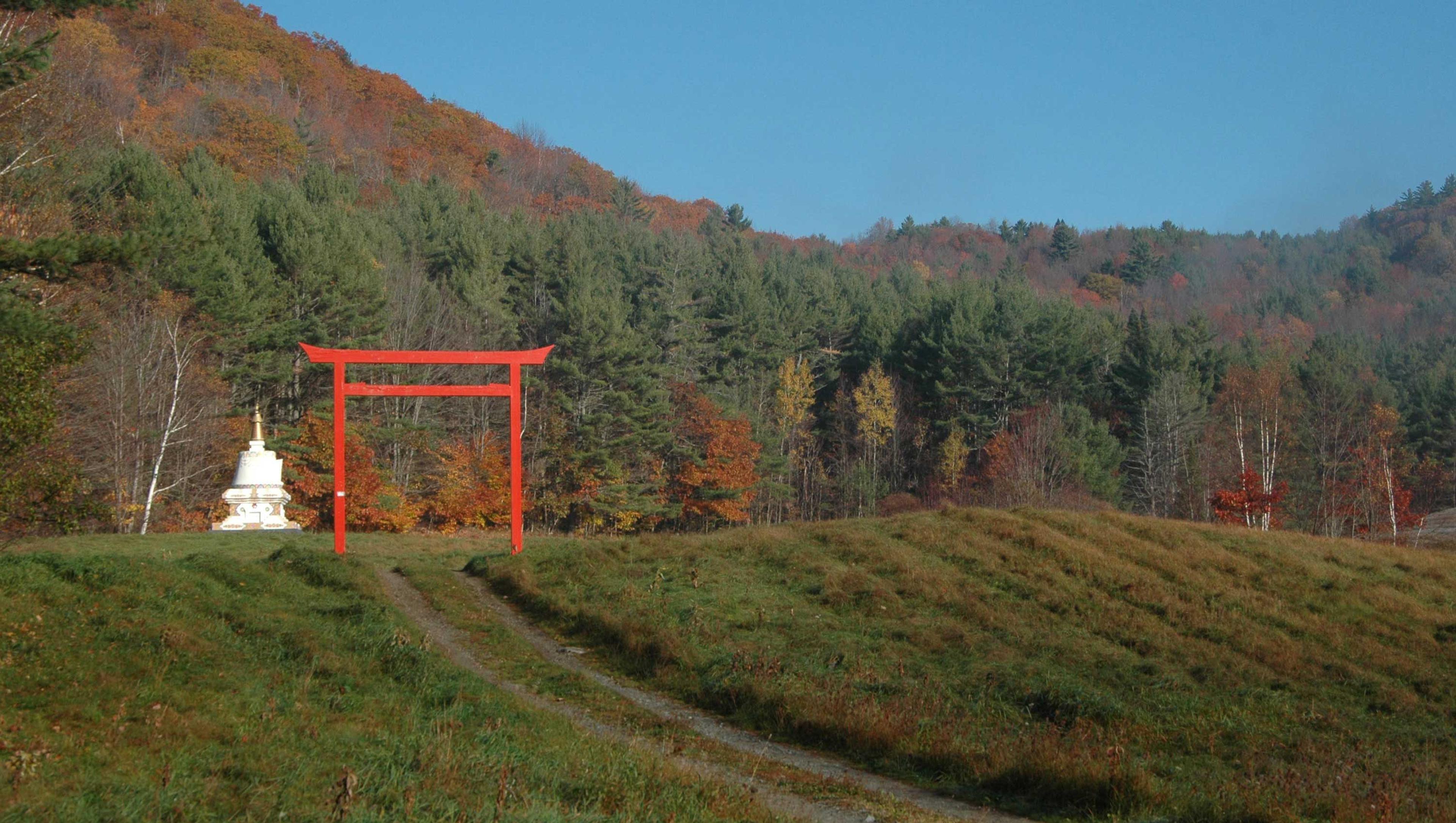
FAQ
Solitary Retreats
Cabin practitioners must have completed at least two weeks of group retreat (not necessarily consecutive) that focuses on shamatha/vipashyana meditation or its equivalent. Contact the retreat master if your experience differs.
Not necessarily. While we generally ask those interested in doing our solitary cabin retreats to include a meditation aspect, we do understand that advanced practitioners may wish to focus their retreat time on other disciplines, such as extensive body work or the dharmic arts.
If this is the case for you, please let us know in your application for the solitary cabin retreats and our Retreats Master will reach out to discuss details.
The solitary cabin retreats are open to practitioners of non-Shambhalian lineages, although applicants should understand that Karmê Chöling is a Shambhala lineage-based land center.
If you are applying for one of our solitary cabin retreats from another lineage, simply let us know in your application, and our Retreats Master will reach out to discuss details.
1. An established daily meditation practice of at least one year.
2. Completion of at least two weeks, continuously or separately, of silent group retreat focusing on shamatha/vispashyna meditation, or its equivalent.
3. A letter of recommendation from your meditation instructor if it is your first solitary retreat.
4. A conversation with Karmê Chöling’s retreat master.
The minimum cabin retreat is five nights. Our longest solitary retreats are typically 108 nights, but we are open to longer retreats. Cabins are available year round.
Typically, we do not support vajrayana retreats from another lineage. Contact the Retreat Master if you think an exception should be made.
We discourage the use of electronic devices, such as computers or cell phones, even for dharma study. In solitary retreat, the idea is to rely on your own resources moment to moment. You can provide family members with our emergency phone number and we will contact you immediately if they tell us it is urgent.
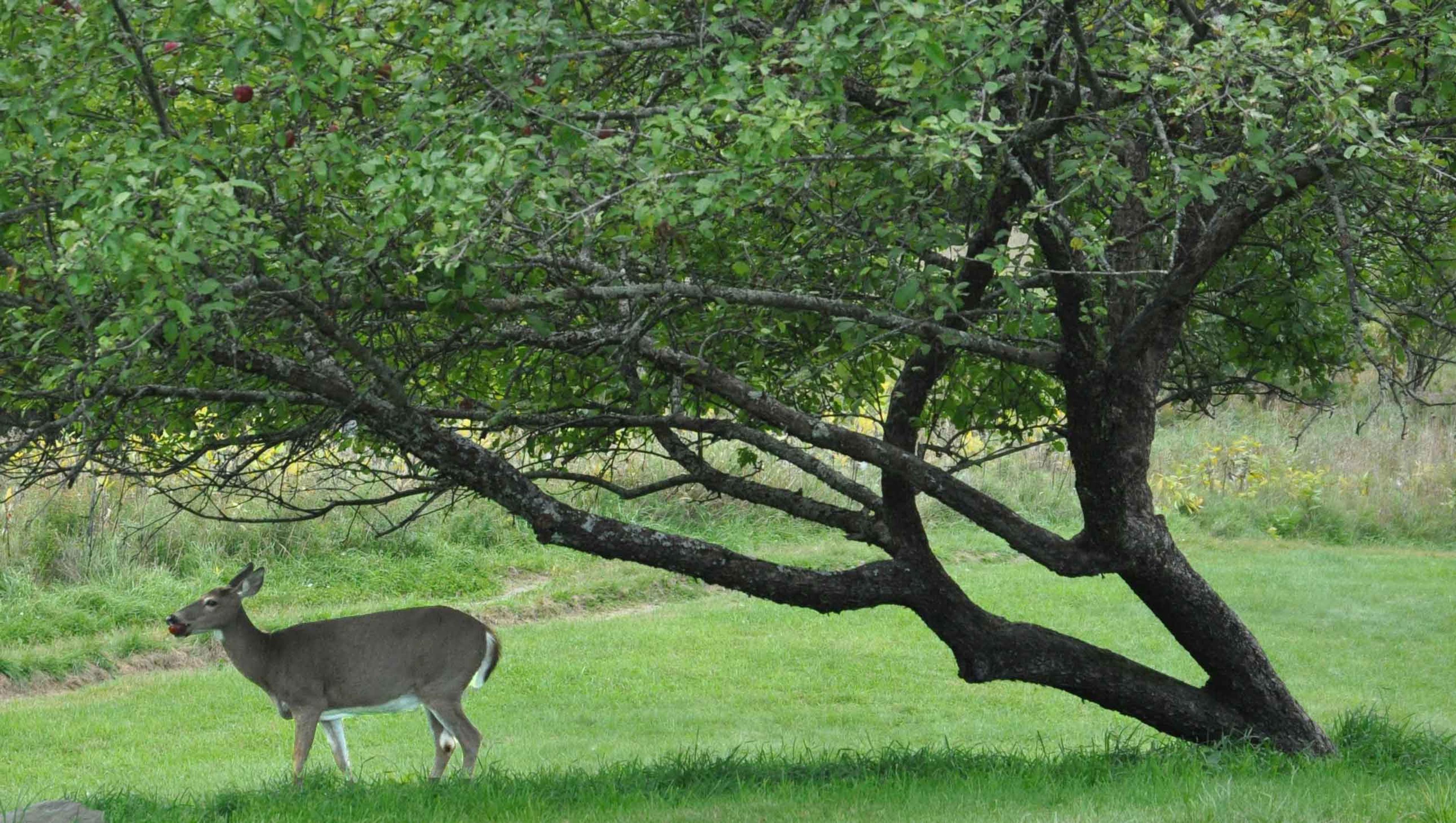
Application Process
For a Solitary Cabin Retreat
Application
Please fill out our Solitary Cabin Retreat application to help us determine a cabin most suitable to your practice. We recommend you book your retreat three months in advance so that you get retreat dates you want.
Deposit
To reserve your cabin retreat we require a deposit of 50 percent of the retreat fees at least two months in advance.
Full payment is due by arrival day.
How to pay a deposit:
- Send a check to: Karmê Chöling registration, 369 Patneaude Lane, Barnet, VT 05821.
- For credit card payments:
call registration at 802 633 2384 Mon & Wed 1-3pm, Sat 10:30am-12:30pm - For PayPal, send payments to bookkeeping@karmecholing.org with your name, phone number and retreat dates.
- For questions, email retreats@karmecholing.org
Cancellations and Refunds:
Embarking on a solitary retreat is a serious and powerful undertaking. Carefully consider your motivation and commitment before booking one. Please read our Cancellation/Refund policy.

A 50 year tradition
Supporting meditation practice
For 50 years, practitioners of the Shambhala and Buddhist traditions as taught by Chögyam Trungpa Rinpoche and Sakyong Mipham Rinpoche, as well as other traditions, have come to Karmê Chöling’s beautiful retreat environment to deepen their understanding of mind through solitary meditation retreat.
The land and retreat cabins have been blessed by many great teachers — among them, the 16th Karmapa, Dilgo Khyentse Rinpoche, Khenpo Tsultrim Gyamtso Rinpoche and Namkha Drimed Rinpoche — and have been ripened by the practice of generations of retreatants.
Was this helpful?
Share This


